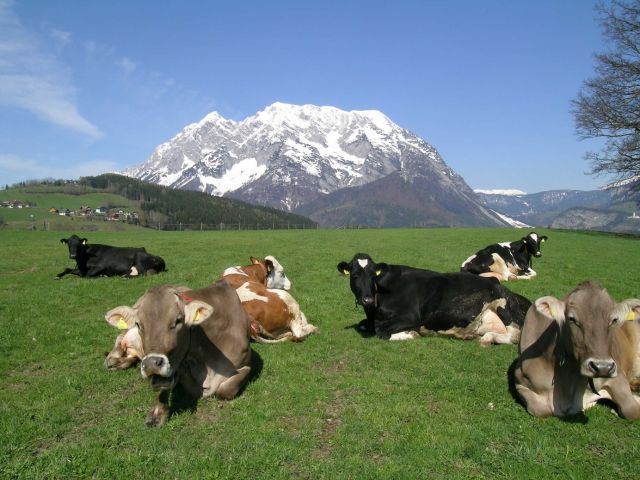New sensor technologies enable valid lying data collection even when kept on pasture. The lying behavior of dairy cows influences animal welfare, animal health and willingness to perform as well as economic efficiency. Compared to stables, the lying times can be postponed or the daily lying time can be limited in pasture farming. At the Bio-Institute of the HBLFA Raumberg-Gumpenstein, changes in the temporal lying behavior of dairy cows were investigated when switching from stable keeping (“stable”) to pasture keeping (“pasture conversion”) and in subsequent short-grass full pasture keeping (“full pasture”) in different pastures -Growing heights (AWH), examined in two experiments (2018 and 2019).
This is how it was measured
During the stable and pasture conversion phase, lactating dairy cows were kept together and fed uniformly in spring 2018 (Experiment 1) and 2019 (Experiment 2). Lying behavior was recorded during the stable period (freestall) on the last 9 days before the start of grazing. The subsequent pasture changeover period included the first 9 (Experiment 1) or 13 grazing days (Experiment 2), where the animals were converted to short-grass full pasture. At the end of the pasture conversion period, the cows were divided equally into two groups in order to be able to test the effects of different pasture growth heights (AWH) in the subsequent full grazing period. Short-turf AWH was recorded using the Rising Plate Pasture Meter. In experiment 1, the lying behavior in the AWH full pasture groups was “short” (5.4 cm ± 0.15) and “medium” (6.6 cm ± 0.13) and in experiment 2 in the AWH group “medium” (6.1 cm ±0.87) and “long” (7.6 cm ±0.95). In the full grazing period, only 1.4 kg of DM concentrate per animal per day was added to the pasture as attractant feed; milk production was significantly lower than in the stable period. In Experiment 1, the lying data set included individual daily data sets for the 8th, 10th and 11th weeks of full grazing and in Experiment 2 for the 4th, 5th, 6th, 8th and 12th weeks of full grazing. The lying parameters were recorded with the HOBO Pendant G data logger at a measurement interval of 30 seconds (s) and then evaluated using a mixed model.
Length of stay varied
In both experiments, the longest daily lying time was found when kept in stables and the shortest when kept on full pasture. In Experiment 1, this went from 11.4 hours/day in the stable to 10.2 hours in the pasture changeover and 7.2 and 8.1 hours per day in the full grazing period in the “short” and “short” AWH groups, respectively. “medium” back. In experiment 2, the daily lying time was 11.1 hours during the stable period, 9.7 hours during the change to pasture and 8.5 (AWH group "medium") and 9.0 hours (AWH group "long" in the full pasture survey weeks). "). The duration of lying per lying period (73–87 minutes/period) did not vary significantly between the survey periods or AWH groups, but the full-grazing animals limited the number of lying periods. In comparison to literature data, the daily lying times determined in the present work with low AWH can be classified as low.
Although no conclusions can be drawn about reduced animal welfare from the available data, measures should be applied in animal and pasture management that allow dairy cows sufficient time to lie down. These include short waiting and standing times, the shortest possible pasture distances, high pasture forage density, palatability and growth height, pasture-adapted individual animal milk production and, if necessary, performance-adapted supplementary feeding.
Scientific article:
Fasching, C., A. Steinwidder , M. Astl, G. Huber, H. Rohrer, R. Pfister and W. Starz (2020): Changes in the temporal lying behavior of dairy cows in stable and short-grass pasture farming. Breeding Science, 92, (5) pp. 302–319, 2020, ISSN 0044-5401 © Verlag Eugen Ulmer, Stuttgart






